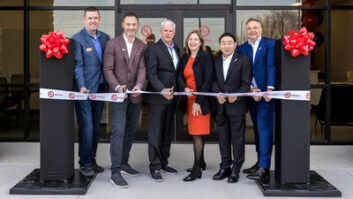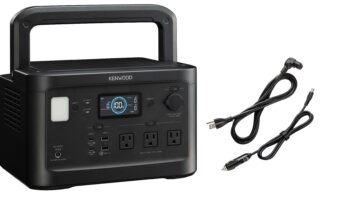NEW YORK — Unilateral pricing policies (UPP) may irk some retailers that lost significant cash flow due to restrictions on online discounting. But according to a CE Week retail panel, the new vendor strictures did the trick in giving brick-and-mortar merchants renewed price parity and even a leg up in the marketplace.
The super session, dubbed “Retailing Business Models” and moderated by TWICE editor in chief Steve Smith, was held during the CEA Research Summit here last month, marking the start of CE Week activities.
As NPD Group industry analyst Stephen Baker observed, “UPP clearly worked. As it took hold online, sales of big-screen TVs shifted to stores, and prices went up a little bit.”
And when pricing between distribution channels is comparable, he argued, consumers prefer stores.
But panelist Randy Schrock, strategic services senior VP for BDS Marketing, cautioned that UPP and MAP, while reasonable in theory, could cause a consumer backlash. “The consumer won’t like subsidizing these businesses,” he said.
The topic of channel conflict continued as the panelists took on showrooming, which they described as a very real phenomenon that has nonetheless been largely exaggerated in the popular press.
Most consumers still prefer in-person engagement, they claimed, while any purchases that are made instore from a mobile device are often transacted at the retailer’s own website.
“Showrooming is overblown and the numbers show it,” Baker said. “Is two in 10 [defections] enough to break the retail business model? No.”
Baker added that retailers are adept at building their own websites which reclaim “a huge percentage of sales.” He also believes the concept of showrooming was promulgated by Internet interests that “want it to be happening, so they tell you about it.”
Schrock observed that “people love interacting with sales associates,” and that half of in-store shoppers tend to follow their recommendations. His comments echoed those of fellow panelist Chris Ely, CEA’s industry analysis senior manager, who in an earlier super session noted, “Consumers like human interaction.”
On the panel Ely added, “People still want to see, touch and feel the product,” which is a key advantage of physical stores.
But Schrock cautioned that while 85 percent of shoppers buy from brick-andmortar stores, between 10 percent and 25 percent do in fact showroom. “That’s not a death knell,” he noted, but could become problematic if retailers allow further share erosion.
All concurred that physical retailers must be willing to price-match their online competitors (“That has to be a non-issue,” Schrock said), and should have a knowledgeable, adequately staffed sales floor to satisfy what Ely described as “a yearning for in-person retail expertise.” But merchants must balance that with cost, profitability and sales-floor flexibility, the panelists said.
The panelists also agreed on the promising prospects for major appliances. Schrock described the category as “a great opportunity” for electronics retailers, especially as the products become more intelligent and CE-like and offer a merchandising synergy to their electronics assortments.
Taking it a step further, Schrock suggested that majaps could play a key role for retailers in presenting complete home eco-systems that would also include security systems and other connected devices.













